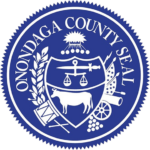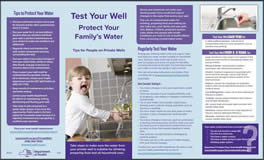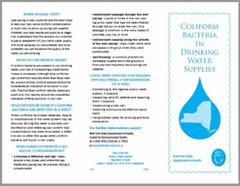Wells
Drinking Water Wells
Part 5, Subpart 5-1 Standards for Water Wells – Appendix 5B
Part 5, Subpart 5-1 Special Requirements for Water Wells Serving Public Water Systems – Appendix 5D
Onondaga County Health Department (OCHD) – Well Information:
OCHD – Water Well Information (PDF)
OCHD – Well Disinfection Information (PDF)
NY State Department of Health (NYSDOH) – Well Information:
NYSDOH – Test Your Well: Protect Your Family’s Water
NYSDOH – Coliform Bacteria in Drinking Water Supplies (PDF)
NYSDOH – Salt and Drinking Water (PDF)
NYSDOH – Wellhead Protection Program
NYSDOH – Fact Sheets on Protection of Water Wells
NYSDOH – Flood Recovery for Water Wells
NY State Department of Environmental Conservation (NYSDEC) – Well Information:
NYSDEC – Well Water Contractor Program
NYSDEC – Need a Water Well Drilled or Repaired? (PDF)
United States Environmental Protection Agency (EPA):
Drinking Water From Household Wells (PDF)
Quick Guide To Drinking Water Sample Collection (PDF)
Common Well Water Contaminants
|
Contaminant |
Maximum Contaminant Level (MCL) |
Sources in Drinking Water |
Health Effects Language |
|---|---|---|---|
|
Any positive sample |
Naturally present in the environment. |
Coliforms are bacteria that are naturally present in the environment and are used as an indicator that other, potentially-harmful, bacteria may be present. Coliforms were found in more samples than allowed and this was a warning of potential problems. | |
|
Any positive sample |
Human and animal fecal waste. |
E. coli are bacteria whose presence indicates that the water may be contaminated with human or animal wastes. Microbes in these wastes can cause short-term effects, such as diarrhea, cramps, nausea, headaches, or other symptoms. They may pose a special health risk for infants, young children, and people with severely compromised immune systems. | |
|
Nitrate |
10 mg/L |
Runoff from fertilizer use; Leaching from septic tanks, sewage; Erosion of natural deposits. |
Infants below the age of six months who drink water containing nitrate in excess of the MCL could become seriously ill and, if untreated, may die. Symptoms include shortness of breath and blue-baby syndrome. |
|
N/A (See Health Effects Language) |
Naturally occurring; Road salt; Water softeners; Animal waste. |
Water containing more than 20 mg/L of sodium should not be used for drinking by people on severely restricted sodium diets. Water containing more than 270 mg/L of sodium should not be used for drinking by people on moderately restricted sodium diets. | |
|
Chloride |
250 mg/L |
Naturally occurring or indicative of road salt contamination. |
No health effects. The MCL for chloride is the level above which the taste of water may become objectionable. In addition to the adverse taste effects, high chloride concentration levels in the water contribute to the deterioration of domestic plumbing and water heaters. Elevated chloride concentrations may also be associated with the presence of sodium in drinking water. |
|
Iron |
300 ug/L |
Naturally occurring. |
Iron has no health effects. At 1,000 ug/L a substantial number of people will note the bitter astringent taste of iron. Also, at this concentration, it imparts a brownish color to laundered clothing and stains plumbing fixtures with a characteristic rust color. Staining can result at levels of 50 ug/L, lower than those detectable to taste buds. Therefore, the MCL of 300 ug/L represents a reasonable compromise as adverse aesthetic effects are minimized at this level. Many multivitamins may contain 3,000 or 4,000 micrograms of iron per capsule. |
|
Manganese |
300 ug/L |
Naturally occurring; Indicative of landfill contamination. |
The Food and Nutrition Board of the National Research Council determined an estimated safe and adequate daily dietary intake of manganese to be 2,000-5,000 micrograms for adults. However, many people’s diets lead them to consume even higher amounts of manganese, especially those who consume high amounts of vegetable or are vegetarian. The infant population is of greatest concern. It would be better if the drinking water were not used to make infant formula since it already contains iron and manganese. Excess manganese produces a brownish color in laundered goods and impairs the taste of tea, coffee, and other beverages. Concentrations may cause a dark brown or black stain on porcelain plumbing fixtures. As with iron, manganese may form a coating on distribution pipes. These may slough off, causing brown blotches on laundered clothing or black particles in the water. |
|
Arsenic |
10 ug/L |
Erosion of natural deposits; Runoff from orchards; Runoff from glass and electronics production wastes. |
Some people who drink water containing arsenic in excess of the MCL over many years could experience skin damage or problems with their circulatory system, and may have an increased risk of getting cancer. |
For more information: Preparing Your Drinking Water Annual Water Quality Report: Guidance for Water Suppliers.
Maximum Contaminant Level (MCL): The highest level of a contaminant that is allowed in drinking water from a Public Water System (PWS).
Milligrams per liter (mg/L) corresponds to one part of liquid in one million parts of liquid (parts per million – ppm).
Micrograms per liter (ug/L) corresponds to one 7 part of liquid in one billion parts of liquid (parts per billion – ppb).
Other Resources:



